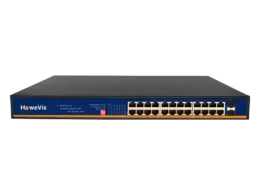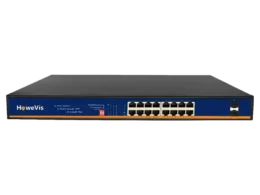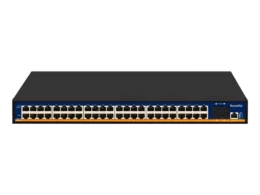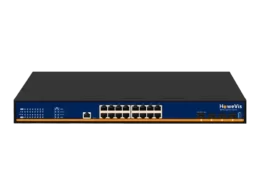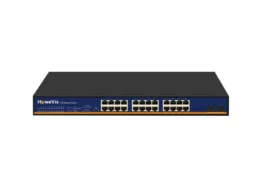What is PoE vs data switch?
| PoE Switch | Supplies power along with data over Ethernet cables. |
| Data Switch | Transmits data only without providing power. |
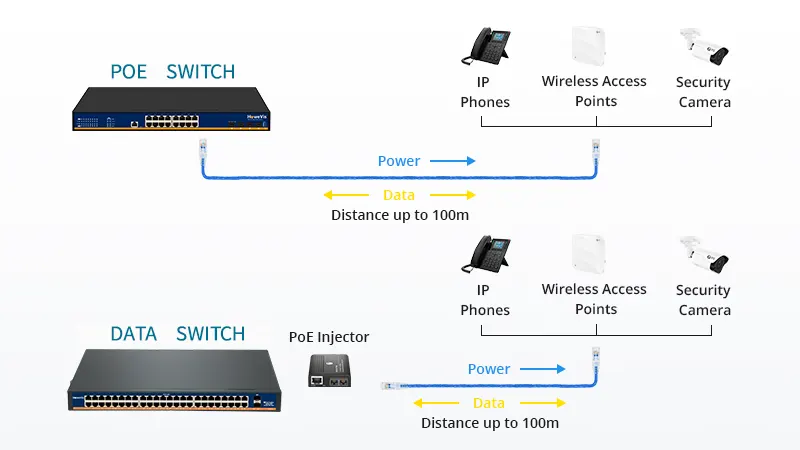
What is the maximum wattage for PoE+?
PoE+ can deliver up to 30 watts per port, making it suitable for high-power devices.
What is the most common PoE?
The most common PoE standard is 802.3af, which provides up to 15.4 watts per port.
What level of power is PoE+ capable of handling?
PoE+ is capable of handling power levels of up to 30 watts per port, supporting a wider range of devices.
Can all Ethernet cables handle PoE?
Most Ethernet cables, especially CAT5e and above, can handle PoE. However, higher-quality cables like CAT6 or CAT6a are recommended for optimal performance.
Is PoE always 24V?
No, PoE does not always operate at 24 volts. Different PoE standards may deliver power at varying voltages, with 48 volts being the most common.
Do you need a special Ethernet cable for PoE+?
While not mandatory, using high-quality Ethernet cables like CAT6 or CAT6a is recommended for PoE+ applications to ensure reliable power delivery and minimize power loss.
Do you need all 4 pairs for Ethernet?
Yes, Ethernet typically requires all 4 pairs (8 wires) in the cable to function properly. Each pair is used for transmitting and receiving data.
How much power does a Layer 3 switch use?
Power consumption varies depending on the model, features, and load of the Layer 3 switch. Generally, Layer 3 switches consume more power compared to Layer 2 switches due to additional processing capabilities.
Do Layer 3 switches have routing tables?
Yes, Layer 3 switches maintain routing tables to make forwarding decisions based on IP addresses. These routing tables help determine the best path for data packets to reach their destination.
Can you detect an unmanaged switch on the network?
Detecting an unmanaged switch can be challenging since they typically do not have remote management interfaces or SNMP (Simple Network Management Protocol) support. However, network monitoring tools may detect them based on network traffic patterns or device discovery mechanisms.
Does managed switch mean PoE?
No, a managed switch refers to a switch that offers advanced management features such as VLAN configuration, QoS (Quality of Service), and port mirroring. PoE (Power over Ethernet) is a separate feature that allows the switch to provide power to connected devices over Ethernet cables.
Is an Ethernet splitter better than an unmanaged switch?
It depends on the requirements. An Ethernet splitter divides a single Ethernet connection into multiple ports, providing basic connectivity without management features. An unmanaged switch offers more flexibility and functionality, making it suitable for larger or more complex networks.
What is the difference between a managed switch and a router?
| Managed Switch: | Router: |
| Operates at Layer 2 of the OSI model. | Operates at Layer 3 of the OSI model. |
| Provides advanced management features like VLANs and QoS. | Routes traffic between different networks. |
| Used for local network traffic management. | Provides network connectivity between LANs and WANs. |
Which switches have the lowest latency?
Switches designed for high-performance applications such as gaming or real-time data processing typically have the lowest latency. These switches often feature specialized hardware and optimized firmware to minimize packet processing delays.
What is the VLAN for switch management?
The management VLAN is a virtual LAN segment designated for network management traffic. It isolates management traffic from regular user traffic, enhancing security and network performance.
Does a switch need an IP address to work?
No, a switch can function without an IP address, especially if it is solely used for forwarding Ethernet frames within a local network. However, assigning an IP address to a switch enables remote management and monitoring capabilities.
How do you communicate between two VLANs in the same switch?
You can enable inter-VLAN routing on a Layer 3 switch or a router to allow communication between two VLANs within the same switch. This involves configuring a routing interface for each VLAN and setting up appropriate routing rules.
Can any Ethernet cable be used for PoE?
Yes, most Ethernet cables, including Cat5e, Cat6, and Cat6a, can be used for PoE applications. However, it’s essential to ensure that the cable is rated for the power and voltage levels required by the PoE devices.
What is the difference between PoE and non-PoE switch?
| PoE switch | Provides Power over Ethernet capabilities, allowing it to deliver power to connected devices such as IP cameras or VoIP phones over the Ethernet cable. |
| Non-PoE switch | Does not support PoE and cannot provide power to connected devices. |
Howevision Standard Poe Switches
-
24 Ports 10/100/1000Base-TX Unmanaged AI PoE Switch with 2xGigabit SFP
-
16 Ports 10/100/1000Base-TX Unmanaged AI PoE Switch with 2xGigabit SFP
-
48 Ports Layer 3 managed POE switch with 4 Ports 10Gbps SFP+
-
16 Ports Gigabit Layer 3 Managed POE switch with 4 Ports 10G uplink
-
24 Ports 2.5gb Ethernet Switches with 2 Ports 10G
-
24 Ports Gigabit Layer 3 Core Fiber Switches with 4 Ports 10G SFP
Can I use Cat6 for PoE cameras?
Yes, Cat6 Ethernet cables are commonly used for PoE camera installations due to their higher bandwidth and capability to handle PoE power requirements effectively.
Is PoE High Voltage?
PoE (Power over Ethernet) operates at relatively low voltage levels, typically in the range of 44-57 volts, depending on the PoE standard and device requirements. This voltage is considered safe for powering various network devices.
What is the difference between 12V and 24V PoE?
| 12V PoE | Delivers power over Ethernet at a voltage level of 12 volts. It is commonly used in low-power applications such as IP cameras or access points. |
| 24V PoE | Provides power over Ethernet at a higher voltage level of 24 volts, suitable for devices with higher power requirements. |
What voltage is PoE 802.3 at?
| PoE 802.3af | Provides power over Ethernet at a voltage level of around 44-57 volts, with a maximum power delivery of 15.4 watts per port. |
| PoE 802.3at (PoE+) | Offers higher power delivery, typically up to 30 watts per port, at the same voltage range as PoE 802.3af. |
What is PoE+ vs PoE++?
| PoE+ (802.3at) | Provides higher power delivery compared to standard PoE (802.3af), typically up to 30 watts per port. It is suitable for powering devices with higher power requirements such as PTZ cameras or wireless access points. |
| PoE++ (802.3bt) | Offers even higher power delivery, exceeding 30 watts per port and reaching up to 60 or 90 watts per port. It is designed for power-hungry devices like high-end IP cameras or LED lighting systems. |

What is the highest PoE output?
The highest PoE output is achieved with the latest PoE standards, such as 802.3bt (PoE++), which can deliver up to 60 or 90 watts of power per port, depending on the implementation.
How do I set up a PoE security camera?
| To set up a PoE security camera: |
| 1).Connect the PoE switch to your network router. |
| 2).Use an Ethernet cable to connect the PoE switch to the PoE-enabled security camera. |
| 3).Power on the PoE switch to supply power to the camera. |
| 4).Configure the camera settings as per the manufacturer’s instructions. |
How do I know if my PoE switch is bad?
Signs of a faulty PoE switch include inconsistent power delivery, device connectivity issues, or unusual noises. Conducting diagnostic tests or consulting technical support can help diagnose the problem.
How do you tell if a port on a switch is bad?
A faulty switch port may exhibit symptoms like intermittent connectivity or failure to establish a connection. Test the port with different devices or cables to confirm if the port is indeed faulty.
Author’s Profile

